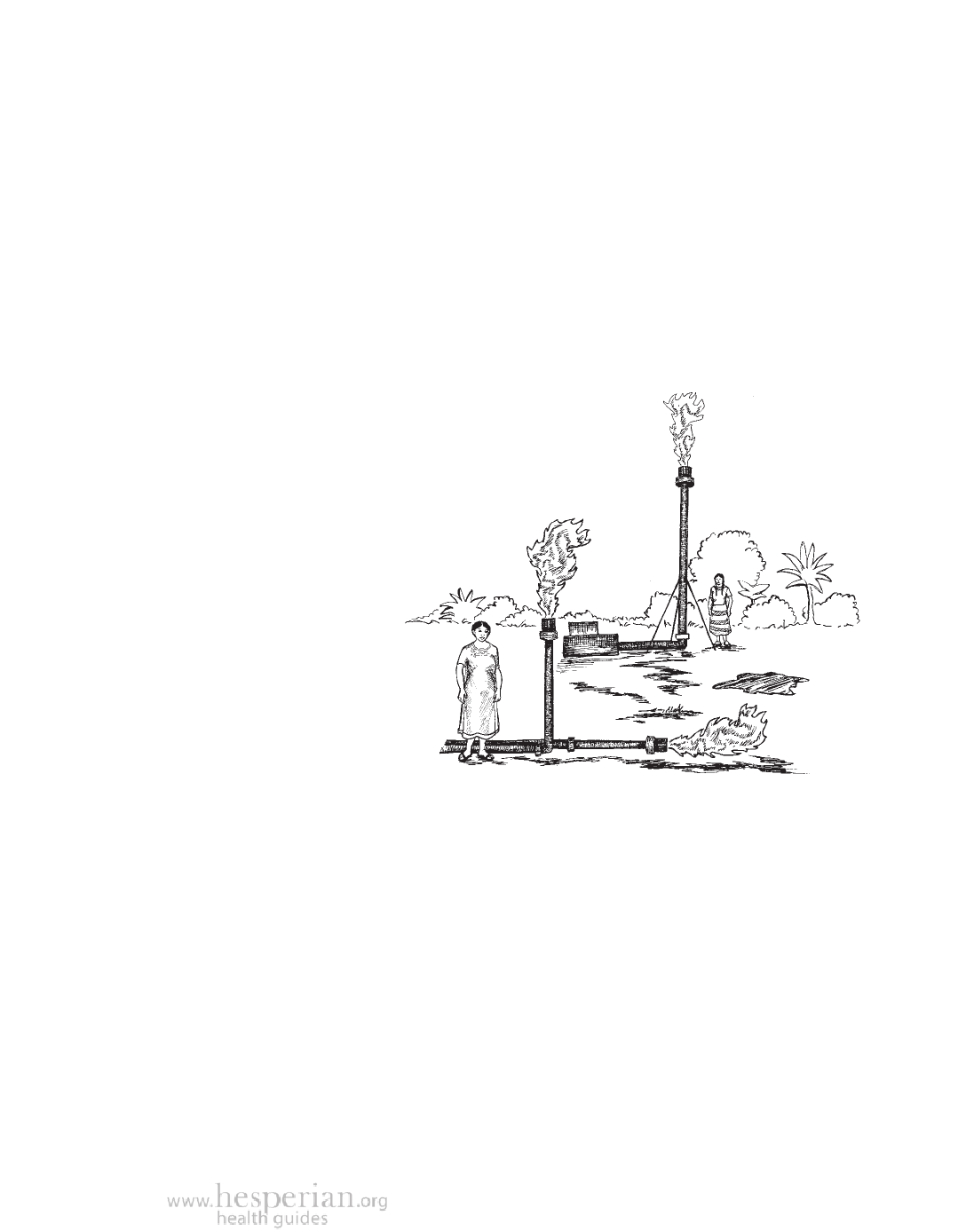
gas flares 511
Gas Flares
When oil is found together with natural gas, oil companies may burn the gas
to separate it from the oil. Burning gas makes giant flares that light up the
sky and make a loud, terrible noise. Gas flaring is dangerous, wasteful, and
very polluting.
Oil companies can sell the gas rather than burn it off. But this is more
costly and difficult because gas must be stored under pressure, increasing
the risk of fires and explosions. So companies flare off the gas simply
because it is less costly, even though it increases the harm to people and the
environment.
Health and safety around gas flares
All gas flares pollute the air and can cause
health problems. But some flares are worse
than others.
Gas may be flared occasionally as a
safety measure to prevent explosions
(called safety flares), or every
day as part of oil operations
(called routine flares). Each
kind of flaring requires a
different response.
Gas flares that
are taller than
a person are
less harmful.
Safety flares
Refineries use safety
flaring to relieve
pressure when too much
gas is in the pipes. Even
though it does not happen
Gas flares that are the height of a person, or flares that
are horizontal to the ground, are very dangerous.
all the time, it is still very
harmful! If there is safety flaring in your community, demand advance notice
from the company about when flares will occur. The company should always
warn nearby communities 24 hours before flaring will happen.
When there is a flare, everyone should stay as far away as possible.
Stay inside with doors and windows closed. (For what to do in an
emergency, see page 457.)
Routine flares
In some places, gas is flared every day, simply because it is cheaper for the
company. It is very difficult for people who live near routine gas flaring to
take precautions all the time. The only way to be safe from routine flaring is
to stop it.
A Community Guide to Environmental Health 2012